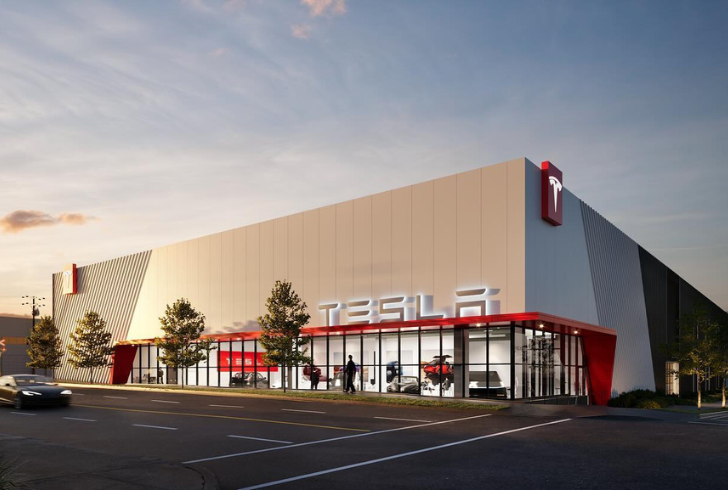Owning a Tesla comes with perks—no gas station pit stops, cutting-edge tech, and an ultra-quiet ride. But when it comes to insuring one, many drivers are caught off guard. The cost of Tesla car insurance can be significantly higher than for a typical gas-powered car. Why? Repairs and parts for electric vehicles (EVs), especially high-tech ones like Teslas, tend to be pricier. That means insurers expect to pay more in claims, which often drives up your premium.
Still, smart choices can make a difference. With the right information and a bit of comparison shopping, it’s possible to bring that premium down—sometimes significantly.
What Makes Tesla Insurance Different?
Tesla didn’t just build cars—they built a full ecosystem. That includes their own insurance product, which launched in California in 2019 and now operates in 12 states.
It covers everything standard: liability, collision, comprehensive, uninsured motorist, and medical payments. Optional coverage like roadside assistance and loan/lease gap insurance is also available.
One standout feature? It’s all integrated. Quotes, policy management, and claims are handled through the Tesla app. Once there’s a VIN and delivery date, new owners can even get insurance quotes while waiting for their vehicle.
Tesla Insurance isn’t just for Tesla drivers in some states—owners of other cars can buy it too.
Where Tesla Insurance Is Available

Currently, Tesla car insurance is available in:
Arizona, California, Colorado, Illinois, Maryland, Minnesota, Nevada, Ohio, Oregon, Texas, Utah, and Virginia.
Availability is expected to grow, but for now, the program is limited to these areas.
Real-Time Insurance Pricing
In most eligible states, Tesla uses real-time driving behavior to determine monthly premiums. Every Tesla vehicle is packed with sensors and software that collect performance and driving data. That means no external devices are needed—unlike other telematics-based insurance plans.
Each policyholder is assigned a Safety Score, calculated based on the last 30 days of driving. Factors that negatively affect this score include:
– Sudden hard braking
– Tight or fast turns
– Following too closely
– Driving between 11 PM and 4 AM
– Speeding
– Forgetting to buckle up
– Forced Autopilot disengagements
Premiums are adjusted monthly depending on the Safety Score and how many miles were driven. In California, however, this real-time system isn’t factored into rate calculation—even though drivers can still view their score in the Tesla app.
What Impacts Tesla Insurance Rates
Several elements influence how much you’ll pay:
1. The car itself
Models with higher repair costs mean higher premiums. A fully-loaded Tesla Model X will cost more to insure than a Model 3 Standard Range.
2. Location
Where the car is parked plays a big role. Urban areas or neighborhoods with higher accident or theft rates typically come with higher premiums.
3. Coverage levels
Full coverage costs more but provides broader protection. Liability-only policies are cheaper but riskier.
Tesla Insurance Discounts Worth Noting
Tesla offers a range of discounts, though not all are available in every state:
– Airbag and anti-theft device discounts
– Defensive driving course discounts for drivers over 55 or 60, depending on the state
– FSD (Full Self-Driving) Supervised discount, available for drivers who log over half their miles using this feature in Texas and Arizona
– Multi-car and employee discounts
– Non-stacking discount (specific to Nevada)
– Elite and good driver discounts in California, based on driving history
These discounts can help reduce your monthly cost, especially when combined with a solid Safety Score.
What Tesla Owners Think

Reviews about Tesla Insurance are mixed. Many appreciate the convenience of managing policies and claims right from their phone, often noting that the rates are lower than with other insurers.
On the flip side, some express frustration with how the Safety Score can raise premiums, especially in busy city environments where maintaining a perfect score can feel unrealistic.
This system sometimes leads drivers to feel overly cautious or even stressed behind the wheel.
Comparing Tesla Insurance to Other Providers
Tesla’s own insurance isn’t the only option. Big-name insurers like State Farm, GEICO, Allstate, and Progressive all offer Tesla coverage. Some also have their own telematics programs—State Farm’s Drive Safe & Save, for instance—that offer similar rewards for cautious driving.
The key difference? Traditional insurers may offer bundle discounts for homeowners insurance or renters coverage, something Tesla doesn’t provide.
Tips for Finding the Best Tesla Car Insurance
To get the most value:
1. Assess your coverage needs. Liability insurance is required, but it’s wise to protect your Tesla with collision and comprehensive coverage.
2. Request multiple quotes. Compare Tesla Insurance with at least two other companies.
3. Factor in bundling. Tesla doesn’t offer home insurance, so think about whether giving up potential bundle discounts is worth it.
4. Check customer feedback. Learn from other Tesla owners’ experiences, especially regarding claim handling and premium changes based on driving habits.
5. Choose a plan that fits your lifestyle. Balancing cost, service, and how you prefer to interact with your insurer can make a big difference.
Why It Pays to Shop Smart for Tesla Insurance
Tesla vehicles may be high-tech, but when it comes to insurance, old-fashioned comparison shopping still wins. Understanding how Tesla’s system works—from real-time Safety Scores to available discounts—can help keep costs down.
For many, Tesla Insurance makes sense. For others, a traditional insurer may still offer better value, especially if bundling or stability is a priority.
No matter which route you choose, being informed is the best way to protect your ride and your wallet.

